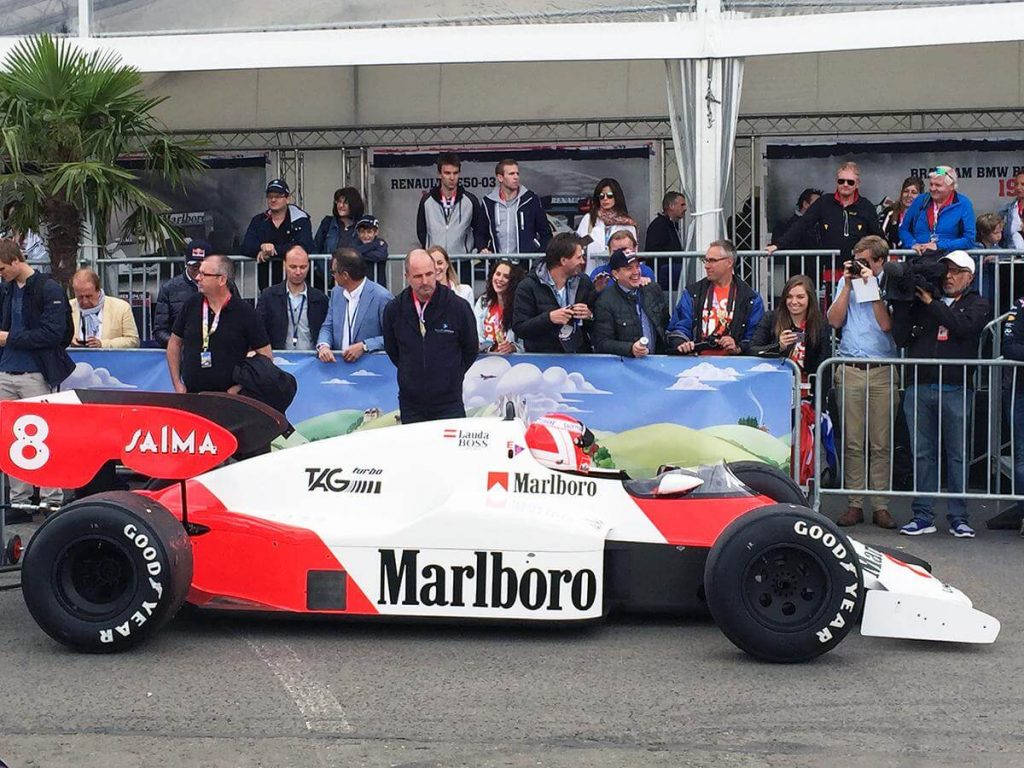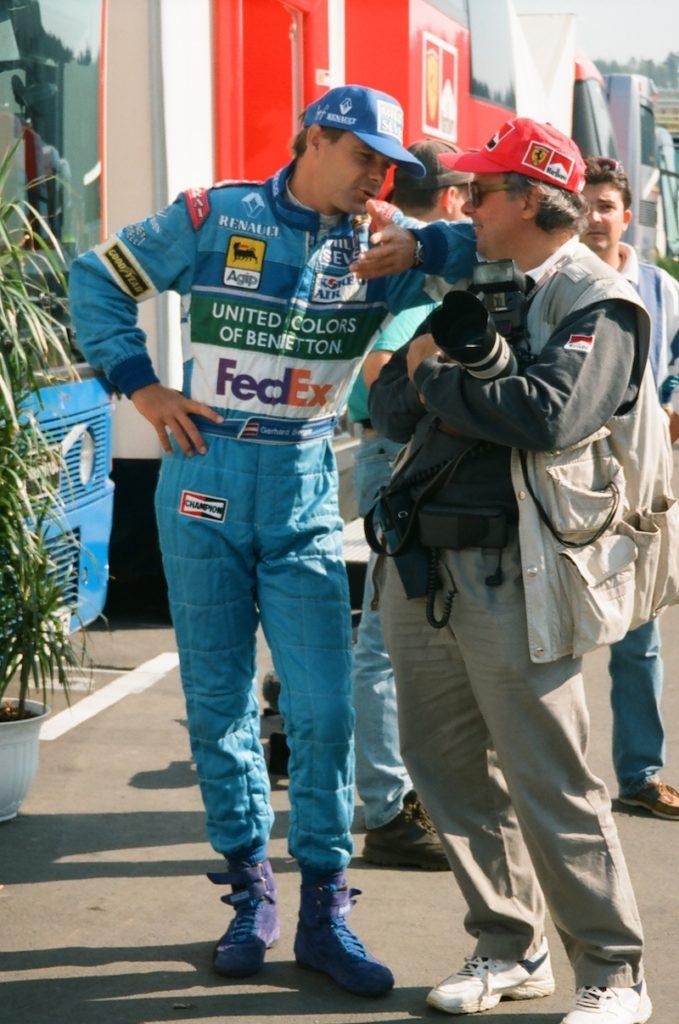
Ahead of the start of the 2020 Formula 1 season this weekend, Károly Méhes remembers some of the highlights – and lowlights – of the Austrian Grand Prix over the years.
Images © Károly Méhes & F1Destinations.com
Although the first Austrian Grand Prix was held in 1964 on the Zeltweg airfield (and won by Lorenzo Bandini) the real story of the race didn’t begin until a few years later when the new, superfast Österreichring was built and hosted the race for the first time in 1970, fifty years ago.
Local ace Jochen Rindt was the superstar of the day. The Austrian arrived for his home race as the leader of the drivers’ championship. He duly took pole in his Lotus 72 but suffered an engine failure during the race, giving the Ferraris of Jacky Ickx and Clay Regazzoni an easy 1-2. This result established the popularity of the circuit among the tifosi, who remained loyal visitors to Styria over the coming years.
After Rindt’s death at Monza in 1970, two new Austrian talents were ready to step up. Niki Lauda and Helmut Marko both made their home debut the following year, though Marko’s career was cut short when he lost an eye during the 1972 French Grand Prix. Lauda’s record would be much better of course as the winner of the drivers’ title in 1975, 1977 and 1984.


The Österreichring alternated with the original Silverstone layout for the spoils as the fastest track on the calendar. It also threw up plenty of surprises for the underdogs, including maiden F1 victories for Vittorio Brambilla (1975), John Watson (1976), Alan Jones (1977) and Elio de Angelis (1982). Alan Jones famously recalled how unprepared the organizers were when he won for Shadow in 1977: “It was a big surprise to everybody, including the organisers, who didn’t have the Australian National Anthem ready. Some drunk guy played Happy Birthday on a trumpet instead. I didn’t mind a bit.”
The biggest celebrations surely came in 1984, however, when Niki Lauda won at home in his eleventh attempt in the McLaren TAG turbo machine. Lauda announced his second and final retirement on the eve of the 1985 race, but by this time Austria already had a next-generation driver on the grid. Gerhard Berger, who repeated Niki’s path to Ferrari, only raced at home three times before 1987’s dangerous start-line accidents (made worse by the very narrow track) brought about the end of the original Österreichring.

In those days, it was almost unheard of for a discarded track to come back to Formula 1. The Austrian organizers needed exactly a decade to do so, but they succeeded in returning to the calendar ten years later. The fact that Bernie Ecclestone had a soft spot for the country undoubtedly helped. He managed the career of Jochen Rindt and was Niki Lauda’s team boss at Brabham.
The circuit was modernized, shortened and renamed the A1 Ring for its return to the Formula 1 calendar in 1997. Few people though that this second stint would only last six years, but the scandal of the 2002 Austrian Grand Prix certainly didn’t help. At the peak of Ferrari’s Schumacher golden years, the team’s sporting director Jean Todt ordered race leader Rubens Barrichello to let his teammate Michael Schumacher past “for the sake of the championship”.


It was still early in the season and Schumacher already had a comfortable lead in the championship. And on that particular weekend, Barrichello was faster than the German. The Brazilian did what he was asked to do in a very spectacular and embarrassing manner, slowing down almost to a standstill after exiting the final corner and within sight of the chequered flag, allowing Schumacher to cruise to “victory.” I clearly remember how the press room exploded. The Brazilian broadcasters screamed and even asked me to make a comment, but I couldn’t say anything into their microphone except, “shame, shame, shame!” Indeed, it was.
Over the years, the Austrian Grand Prix was known as a friendly, rural event that provided a unique backdrop of beautiful countryside (with added cows) to the spectacle of Formula 1. One year, the race fell on Mother’s Day and the organizers decided to invite the mothers of every driver. But all these efforts were seemingly not enough. The last race at the A1 Ring was held in 2003. Michael Schumacher triumphed once again, this time without any help.


When I visited the circuit in 2008, it was a sad sight. The circuit had fallen into disrepair and the return of Formula 1 seemed to be a long way off. Fortunately, Red Bull owner Dietrich Mateschitz had other ideas. He let rebuilt the whole facility into an ultra-modern 21st century race track (the beautiful hilly backdrop remained, thankfully) and named it after his energy drink company.
The third rebirth of the Austrian Grand Prix came via an unexpected 7-year deal beginning in 2014. In keeping with Mercedes dominance of the turbo-hybrid era, the German team won the first four editions of the event, though the local team has triumphed the past two years thanks to some incredible performances from Max Verstappen. After a slow start, the crowds have also returned, notably thousands of orange-shirted Verstappen supporters from Holland who have sold out entire grandstands.

If it was ever in doubt, Niki Lauda also became an undisputed national hero in recent years. He was trackside in his role as non-executive director of the dominant Mercedes AMG F1 team and also took to the track several times in his old cars as part of the Legends Parade. Last year, just a few weeks after his death, a turn at the circuit was named in his honour and the whole event was dedicated to the memory of “Niki Nazionale.”
This year’s race promises to be even more unique. Not only will the Austrian Grand Prix be the first race of a season badly impacted by the coronavirus pandemic, but the Red Bull Ring will also stage a second event – the Steiermark Grand Prix – one week later. No motorhomes, no spectators, smaller teams and regular health tests. Formula 1 will look very different, but the stunning backdrop and friendly rural welcome in Styria will be the same.


